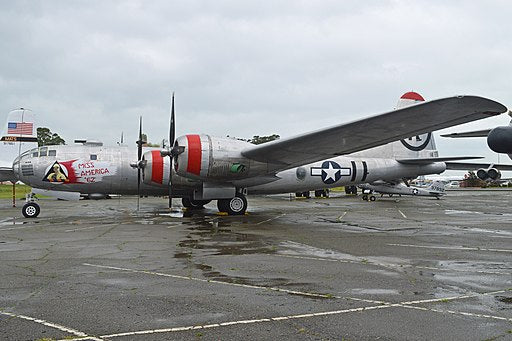The B-29 Superfortress played an invaluable role during World War II. Its advanced technologies and capabilities became symbols of American ingenuity and military prowess. But what’s equally fascinating is how the Soviet Union, in the post-war period, created a near-identical copy of the B-29, known as the Tupolev Tu-4.
The Need for Advanced TechnologyA Gap in Technology
As World War II drew to a close, the Soviet Union realized it was falling behind in the arena of strategic bomber technology. Even though they had made impressive strides in developing tanks and artillery, they were still grappling to equal the aviation progress the United States had achieved.
The B-29’s Superiority
The B-29 was a technological wonder in its era, boasting innovations such as pressurized cabins, remote-controlled gun turrets, and cutting-edge radar systems. Its ability to undertake long-range missions deep into hostile lands was unparalleled. The Soviet Union, fully aware of the strategic edge this technology could provide, was eager to acquire similar capabilities.
The Opportunity: Captured B-29s
During the war, several B-29s were forced to land in Soviet territory after missions over Japan. The Soviets, neutral with Japan at the time, interned the aircraft and their crews. This provided a unique opportunity to study the advanced bomber up close.
The Reverse Engineering Process
Stalin ordered that the B-29 be reverse-engineered, elevating the task to a matter of national importance. The significant project was entrusted to the famed aircraft designer Andrei Tupolev.
The undertaking was colossal. Every component of the B-29 required careful measurement, thorough analysis, and precise replication. From major systems down to the most minor parts, everything was reverse-engineered. Soviet manufacturing facilities underwent extensive retooling to fabricate the essential components.
This Herculean task resulted in the creation of the Tupolev Tu-4, a bomber bearing an uncanny resemblance to the B-29. Making its debut flight in 1947, only two brief years following the launch of the project, the Tu-4 emerged as a crucial element in the Soviet strategic bomber fleet, maintaining that role for an extended period of time.
Strategic Implications
The triumphant duplication of the B-29 enabled the Soviet Union to narrow the technological divide with the United States in a vital aspect of military innovation. Beyond that, it served as a resounding declaration of the Soviet Union’s skill and resolve in the global arena.
Ethical Considerations
The tale of the Tu-4 brings to the forefront issues concerning intellectual property rights and the moral implications of reverse engineering. Though the situation was one-of-a-kind, this chapter in history underscores the intricate connections between technological innovation, military conflict, and the dynamics of international relations.
The story of why Russia copied the B-29 is a fascinating chapter in the history of technology and the Cold War. Driven by necessity, opportunity, and national pride, the Soviet Union undertook a remarkable project that had lasting implications for military aviation and geopolitics. The tale of the B-29 and the Tu-4 is a testament to human ingenuity, ambition, and the relentless pursuit of strategic advantage.
For more insights into the B-29 and other important military aircraft, visit Aces In Action. Here, you’ll find an amazing piece of artwork by Craig Tinder titled “Thunderhead of Precision,” that commemorates the crew members of the 58th Bombardment Wing, 20th Air Force and their final mission of World War II. The limited edition canvas print even includes a piece of B-29 44-61975 which was accepted in July 1945 and spent its career as a training aircraft.
Thunderhead of Precision – B-29 Superfortress Aviation Art Print by Artist Craig Tinder
14 August 1945 – Five days after the second and final atomic bomb was dropped on Japan, B-29 Superfortress bombers of the 58th Bombardment Wing, 20th Air Force carried out their final attack of the war. As part of an all-out effort to force Japan’s unconditional surrender, nearly 200 B-29s from the 58th struck the Hikari Naval Arsenal (target code: Thunderhead). The mission was considered one of the most precise bombing missions of WWII and included no B-29 losses. At noon the following day, Emperor Hirohito made a radio broadcast announcing Japan’s intention to surrender.





Share:
Ballistic Fear, the story behind "Aggregat 4"
Why was the Ki-61 called the Tony?